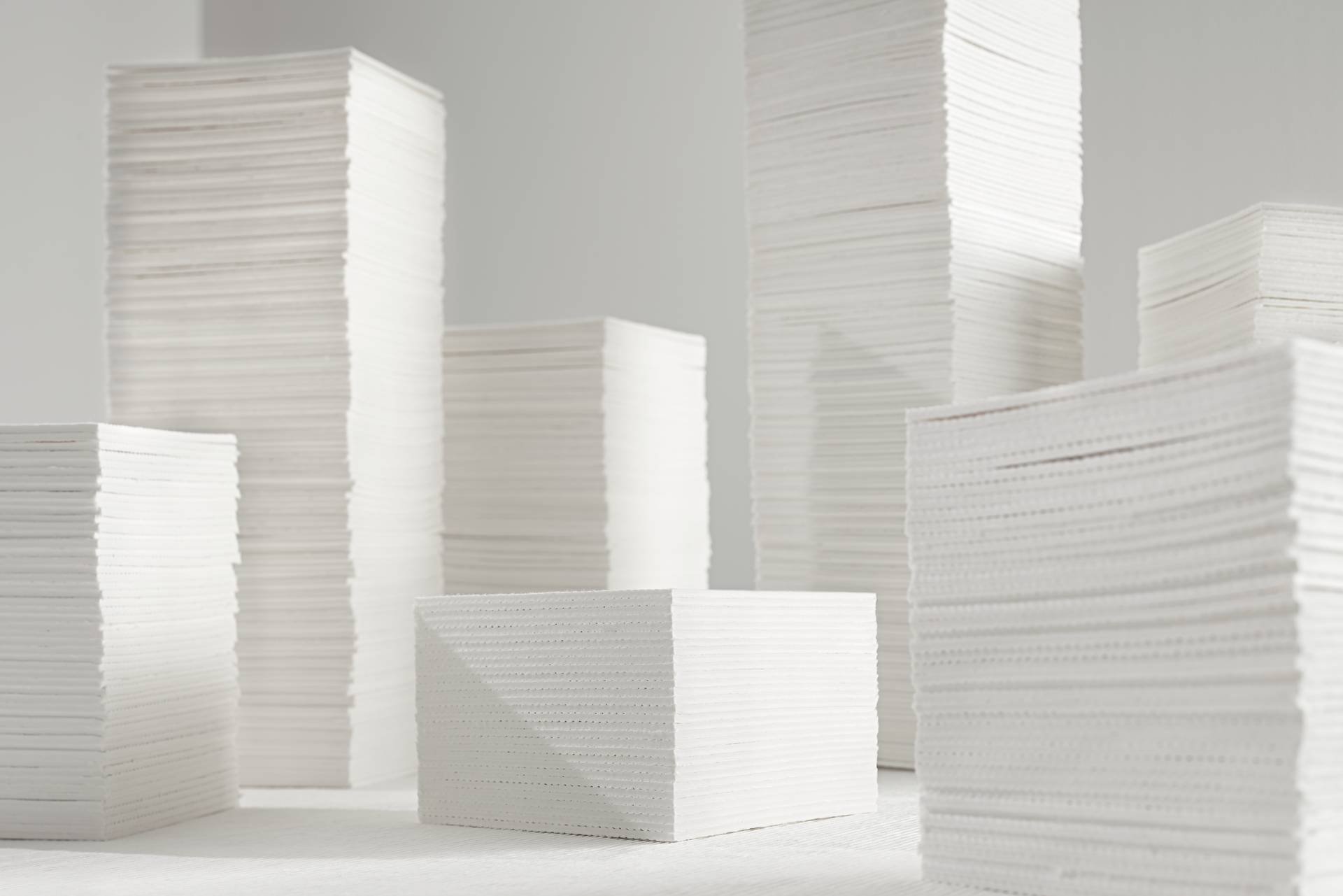Pulp is a renewable, recyclable, and biodegradable raw material made from wood cellulose fibres. It is suitable for manufacturing a wide range of end products across various industries. Due to its innovative properties, pulp is also being developed into new types of bioproducts that can reduce dependence on fossil materials.
How is pulp produced?
Pulp is the tissue of wood from which lignin, the substance that ties the wood fibres together, has been removed. It’s a composite made up of two elements – the amorphous and branched hemicellulose and the crystalline and strong cellulose.
We produce pulp from pulpwood and wood chips generated as a side stream from sawn timber production. The debarked and chipped wood material is cooked in white liquor, which releases the lignin that binds the wood fibres. During the cooking process, the pulp fibre gradually turns into brown pulp mass, which is then washed and bleached. Bleached pulp mass is soft and cottonlike. After bleaching, the pulp continues to the drying department, where it is dried, cut into sheets, and baled. After this the pulp bales are ready to be shipped to customers.

How do softwood pulp and hardwood pulp differ from each other?
At Metsä Fibre, we produce softwood and hardwood pulp from northern pine, spruce, and birch. The most significant difference between softwood and hardwood pulp lies in the differences in wood type and fibre characteristics. Wood fibres are long cellular structures composed of cellulose, hemicellulose, and lignin in different proportions. This composition gives the wood its strength and flexibility, and determines the properties of the wood pulp obtained from it, enabling various end-product applications.
The wood fibres of softwood pulp made from pine and spruce are typically longer than those of hardwood pulp made from birch, which creates greater tensile strength and stiffness in the final product. Bleached softwood pulp is commonly used in the production of paper, paperboard, and tissue products.
Hardwood pulp contains shorter fibres, which makes paper, for example, thicker, smoother, and more absorbent. Bleached hardwood pulp is commonly used in the production of paperboard and specialty papers, coated and uncoated papers, as well as tissue products.
What is pulp used for?
Pulp is a crucial raw material for many products we use daily. Common end-use segments include tissue papers, packaging boards, printing and writing papers, and specialty papers. Additionally, pulp is used in the production of plastic-like products, textiles, and biocomposites.

